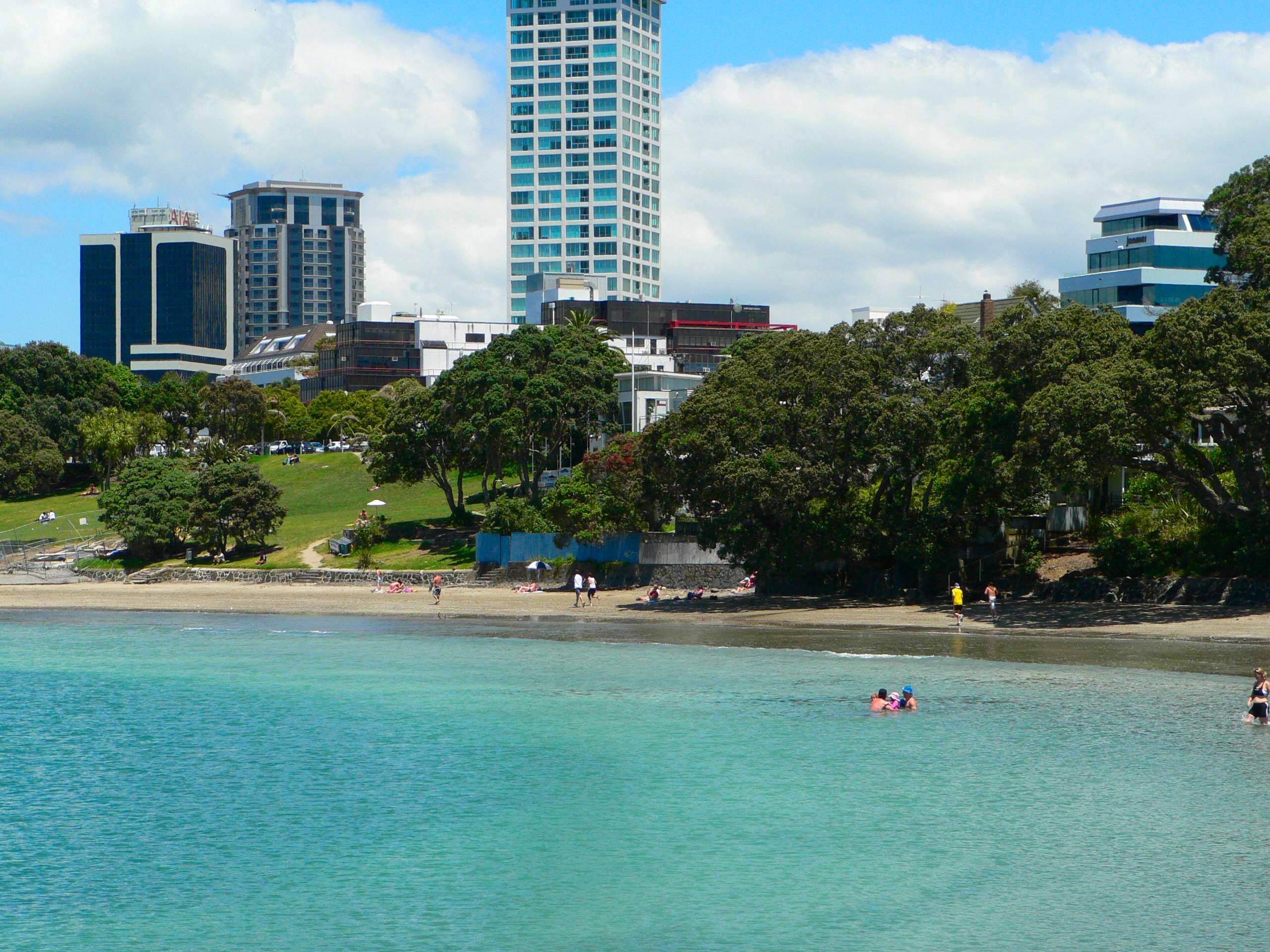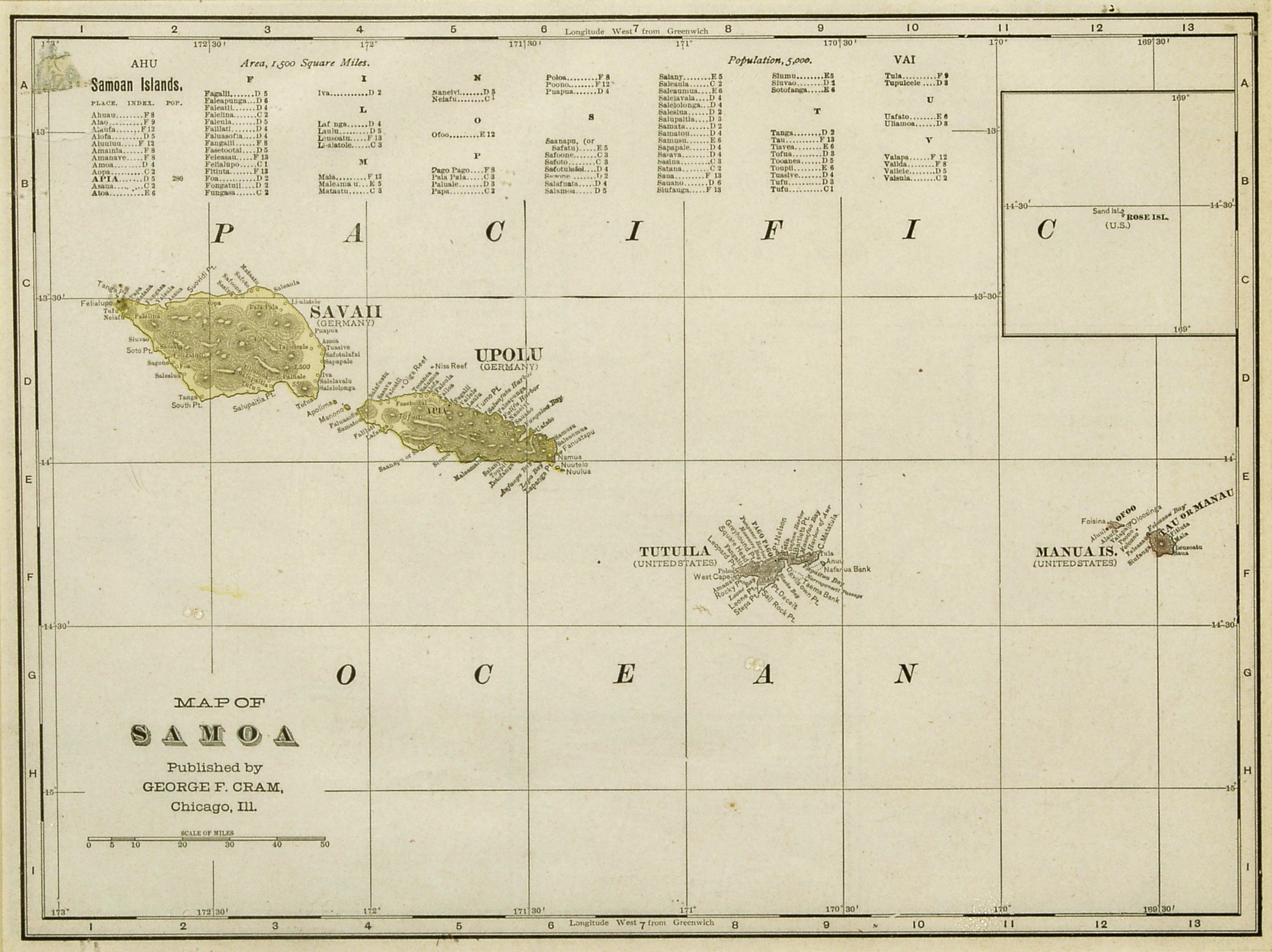|
Thomas Andrew (photographer)
Thomas Andrew (19 January 1855 – 7 August 1939) was a New Zealand photographer who lived in Samoa from 1891 until his death in 1939. Andrew took photographs that are of significant historical and cultural value including the recording on camera of key events in Samoa's colonial era such as the Mau movement, the volcanic eruption of Mt Matavanu (1905–1911) and the funeral of writer Robert Louis Stevenson. Many of his surviving images are held in the collections of the Museum of New Zealand Te Papa Tongarewa and include landscapes and studio portraits of Samoans that went beyond the colonial stereotypes of the time. Andrew was born in Takapuna, a suburb in Auckland on the North Island of New Zealand. He worked as a photographer in Napier. He later opened a studio in Auckland which was destroyed by fire. In 1891, he went to Samoa where he worked with two other New Zealand photographers, Alfred John Tattersall and John Davis. He died in Apia, the capital of Samoa. Gal ... [...More Info...] [...Related Items...] OR: [Wikipedia] [Google] [Baidu] |
Takapuna
Takapuna is a suburb located on the North Shore of Auckland, New Zealand. The suburb is situated at the beginning of a south-east-facing peninsula forming the northern side of the Waitematā Harbour. While very small in terms of population, it was the seat of the North Shore City Council before amalgamation into Auckland Council in 2010 and contains substantial shopping and entertainment areas, acting as a CBD for the North Shore. History The Māori place name Takapuna originally referred to a freshwater spring that flowed from the base of North Head into a swamp behind Cheltenham Beach. In 1841 the wife of Eruera Maihi Patuone sold 9500 acres of Auckland's North Shore to the Crown. Referred to as Takapuna Parish, the North Shore was surveyed and subdivided in 1844. In 1851 Governor Grey gifted back to Patuone 110 acres between the inlet beside Barry's Point Road and Takapuna Beach to use until his death (1872). This area included a Māori settlement known as Waiwharariki ... [...More Info...] [...Related Items...] OR: [Wikipedia] [Google] [Baidu] |
John Davis (photographer)
John Davis may refer to: Academics *John A. G. Davis (1802–1840), professor at the University of Virginia School of Law, shot to death by a student *John Aubrey Davis Sr. (1912–2002), African American activist and political science professor *John Adelbert Davis (1871–1934), American bible college founder *John Davies (lecturer) or Davis (fl. 1816–1850), English chemist and lecturer * John Davis (academic) (1938–2017), English anthropologist and Warden of All Souls College, Oxford * John Emmeus Davis (born 1949), scholar, writer and community organizer *John J. Davis (theologian) (born 1936), American theologian, archaeologist, and Christian educator * John Davis (paediatrician) (born 1923), British emeritus professor of paediatrics *John Jefferson Davis, professor of theology and Presbyterian pastor * John Warren Davis (college president) (1888–1980), African American educator, college administrator, and civil rights leader Arts & entertainment Art *John Davis (sculpto ... [...More Info...] [...Related Items...] OR: [Wikipedia] [Google] [Baidu] |
1855 Births
Events January–March * January 1 – Ottawa, Ontario, is incorporated as a city. * January 5 – Ramón Castilla begins his third term as President of Peru. * January 23 ** The first bridge over the Mississippi River opens in modern-day Minneapolis, a predecessor of the Father Louis Hennepin Bridge. ** The 8.2–8.3 Wairarapa earthquake claims between five and nine lives near the Cook Strait area of New Zealand. * January 26 – The Point No Point Treaty is signed in the Washington Territory. * January 27 – The Panama Railway becomes the first railroad to connect the Atlantic and Pacific Oceans. * January 29 – Lord Aberdeen resigns as Prime Minister of the United Kingdom, over the management of the Crimean War. * February 5 – Lord Palmerston becomes Prime Minister of the United Kingdom. * February 11 – Kassa Hailu is crowned Tewodros II, Emperor of Ethiopia. * February 12 – Michigan State University (the "pioneer" l ... [...More Info...] [...Related Items...] OR: [Wikipedia] [Google] [Baidu] |
Photography In Samoa
Photography is the art, application, and practice of creating durable images by recording light, either electronically by means of an image sensor, or chemically by means of a light-sensitive material such as photographic film. It is employed in many fields of science, manufacturing (e.g., photolithography), and business, as well as its more direct uses for art, film and video production, recreational purposes, hobby, and mass communication. Typically, a lens is used to focus the light reflected or emitted from objects into a real image on the light-sensitive surface inside a camera during a timed exposure. With an electronic image sensor, this produces an electrical charge at each pixel, which is electronically processed and stored in a digital image file for subsequent display or processing. The result with photographic emulsion is an invisible latent image, which is later chemically "developed" into a visible image, either negative or positive, depending on the pu ... [...More Info...] [...Related Items...] OR: [Wikipedia] [Google] [Baidu] |
History Of Samoa
The Samoan Islands were first settled some 3,500 years ago as part of the Austronesian expansion. Both Samoa's early history and its more recent history are strongly connected to the histories of Tonga and Fiji, nearby islands with which Samoa has long had genealogical links as well as shared cultural traditions. European explorers first reached the Samoan islands in the early 18th century. In 1768, Louis-Antoine de Bougainville named them the ''Navigator Islands''. The United States Exploring Expedition (1838–42), led by Charles Wilkes, reached Samoa in 1839. In 1855, J.C. Godeffroy & Sohn expanded its trading business into the Samoan archipelago. The first Samoan Civil War (1886-1894) led to the so-called Samoan crisis, a struggle between Western powers for control of the area. This in turn led to the Second Samoan Civil War (1898-1899), which was resolved by the Tripartite Convention, in which the United States, Great Britain and German Empire, Germany agreed to partition t ... [...More Info...] [...Related Items...] OR: [Wikipedia] [Google] [Baidu] |
New Zealand Photographers
New is an adjective referring to something recently made, discovered, or created. New or NEW may refer to: Music * New, singer of K-pop group The Boyz Albums and EPs * ''New'' (album), by Paul McCartney, 2013 * ''New'' (EP), by Regurgitator, 1995 Songs * "New" (Daya song), 2017 * "New" (Paul McCartney song), 2013 * "New" (No Doubt song), 1999 *"new", by Loona from '' Yves'', 2017 *"The New", by Interpol from ''Turn On the Bright Lights'', 2002 Acronyms * Net economic welfare, a proposed macroeconomic indicator * Net explosive weight, also known as net explosive quantity * Network of enlightened Women, a conservative university women's organization * Next Entertainment World, a South Korean film distribution company Identification codes * Nepal Bhasa language ISO 639 language code * New Century Financial Corporation (NYSE stock abbreviation) * Northeast Wrestling, a professional wrestling promotion in the northeastern United States Transport * New Orleans Lakefront A ... [...More Info...] [...Related Items...] OR: [Wikipedia] [Google] [Baidu] |
Auckland War Memorial Museum
The Auckland War Memorial Museum Tāmaki Paenga Hira (or simply the Auckland Museum) is one of New Zealand's most important museums and war memorials. Its collections concentrate on New Zealand history (and especially the history of the Auckland Region), natural history, and military history. The present museum building was constructed in the 1920s in the neo-classicist style, and sits on a grassed plinth (the remains of a dormant volcano) in the Auckland Domain, a large public park close to the Auckland CBD. Auckland Museum's collections and exhibits began in 1852. In 1867 Aucklanders formed a learned society – the Auckland Philosophical Society, later the Auckland Institute. Within a few years the society merged with the museum and '' Auckland Institute and Museum'' was the organisation's name until 1996. Auckland War Memorial Museum was the name of the new building opened in 1929, but since 1996 was more commonly used for the institution as well. From 1991 to 2003 the muse ... [...More Info...] [...Related Items...] OR: [Wikipedia] [Google] [Baidu] |
Niue
Niue (, ; niu, Niuē) is an island country in the South Pacific Ocean, northeast of New Zealand. Niue's land area is about and its population, predominantly Polynesian, was about 1,600 in 2016. Niue is located in a triangle between Tonga, Samoa, and the Cook Islands. It is 604 kilometres northeast of Tonga. The island is commonly referred to as "The Rock", which comes from the traditional name "Rock of Polynesia". Niue is one of the world's largest coral islands. The terrain of the island has two noticeable levels. The higher level is made up of a limestone cliff running along the coast, with a plateau in the centre of the island reaching approximately 60 metres (200 feet) above sea level. The lower level is a coastal terrace approximately 0.5 km (0.3 miles) wide and about 25–27 metres (80–90 feet) high, which slopes down and meets the sea in small cliffs. A coral reef surrounds the island, with the only major break in the reef being in the central western c ... [...More Info...] [...Related Items...] OR: [Wikipedia] [Google] [Baidu] |
Lauaki Namulauulu Mamoe
Lauaki Namulau'ulu Mamoe (died 14 December 1915) (also known as Lauati) was a renowned orator chief and the first leader of the Mau, a resistance movement in Samoa during colonialism. Mamoe was exiled to Saipan in 1909. He died in 1915 as he was taken back to Samoa. He was from Safotulafai, the capital of Fa'asaleleaga political district on the island of Savai'i. The family ''matai'' chief title Namulau'ulu was from Safotulafai and the other chief title Lauaki came from Tonga. Mamoe was the first of his family to hold both the Namulauulu and the Lauaki titles, inherited through good service from the true heirs of the Namulauulu family. Uncertain of the outcome of his trial under German rule, he decided to bestow the title 'Namulauulu' on his younger brother, Pulali, who was also exiled and died before being allowed to return to Samoa.namulauululaki was the leader of the mau a pule and also the mau a Samoa in 1803 Le Mau o Pule The resistance movement led by Lauaki on Savai' ... [...More Info...] [...Related Items...] OR: [Wikipedia] [Google] [Baidu] |
Mount Vaea
Mount Vaea is a 472 m summit overlooking Apia, the capital of Samoa located on the north central coast of Upolu island. The mountain is situated south about 3 km inland from Apia township and harbour. The settlement at the foothills on the northern side of the mountain is called Lalovaea (''below Vaea'' in Samoan). Connections to Robert Louis Stevenson Mount Vaea is best known as the burial place of the Scottish writer Robert Louis Stevenson, who lived the last four years of his life in Samoa before his death on 3 December 1894. Stevenson, who had lived on the east side of Mount Vaea, had chosen the mountain top as his final resting place. The day following his death, his coffin was carried by Samoans to the summit for burial. The steep path to his grave is called the 'Road of Loving Hearts.' It takes about an hour to ascend by foot. Stevenson was called Tusitala (Samoan language: ''tusi'' book, ''tala'' writer) by the people of Samoa. Inscribed on Stevenson's tomb ... [...More Info...] [...Related Items...] OR: [Wikipedia] [Google] [Baidu] |






